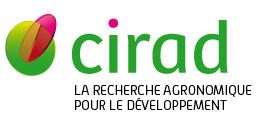Aphid and whitefly management in cotton growing: review and challenges for the future
Deguine J.P., Vaissayre M., Ferron P.. 2004. In : Swanepoel A. (ed.). Proceedings of the world cotton research conferences - 3. Cotton production for the new millennium. Rustenburg : ARC-IIC, p. 1177-1194. World Cotton Research Conference. 3, 2003-03-09/2003-03-13, Cape Town (Afrique du Sud).
In many cotton growing regions in the world, the phytosanitary situation of cotton has been marked in the past two decades by, among other things, a renewed increase in the populations of certain piercing-sucking insects and especially the aphid Aphis gossypii Glover and the whitefly Bemisia tabaci (Gennadius). These pests are polyphagous and display very special biological and ecological features causing damage with extremely serious economic consequences. The methods generally used to control these sucking insects were based mainly on the use of insecticides targeting aphids or whitefly, in most cases with the same spray procedures as for those used to control other major cotton pests such as bollworms. This chemical control has finally proved not very effective and its is expensive and forms a real danger for the conservation of biological diversity and for the environment as a whole. Alternative control methods that are better suited to the integrated management of aphid and whitefly populations are proposed within the framework of more rational and sustainable fanning. They are based on the principle of seeking a return towards a balance between these pests and the various accompanying indigenous beneficial insects. For this, a break with past practices is first recommended in order to prevent an aggravation of the phytosanitary situation, followed by the application of a new strategy based on the integrated pest management concept. The role of preventive measures would thus become preponderant. These are based on a strategy enabling plants to escape attacks by these pests thanks to various procedures such as early sowing, choice of varieties with short cycles, limited vegetative development and vegetation with low appetancy for the insects. Traditional agronomic techniques such as rotations and cropping patterns, rational combinations of crop plants, trap crops, etc., also have complementary effects by limiting pest outbreaks and enhancing populations of benef
Mots-clÃĐs : aphis gossypii; bemisia tabaci; lutte antiravageur; lutte anti-insecte; histoire; lutte chimique; lutte intÃĐgrÃĐe; diagnostic; aide à la dÃĐcision; gossypium
Documents associÃĐs
Communication de congrÃĻs
Agents Cirad, auteurs de cette publication :
- Deguine Jean-Philippe — Bios / UMR PHIM
